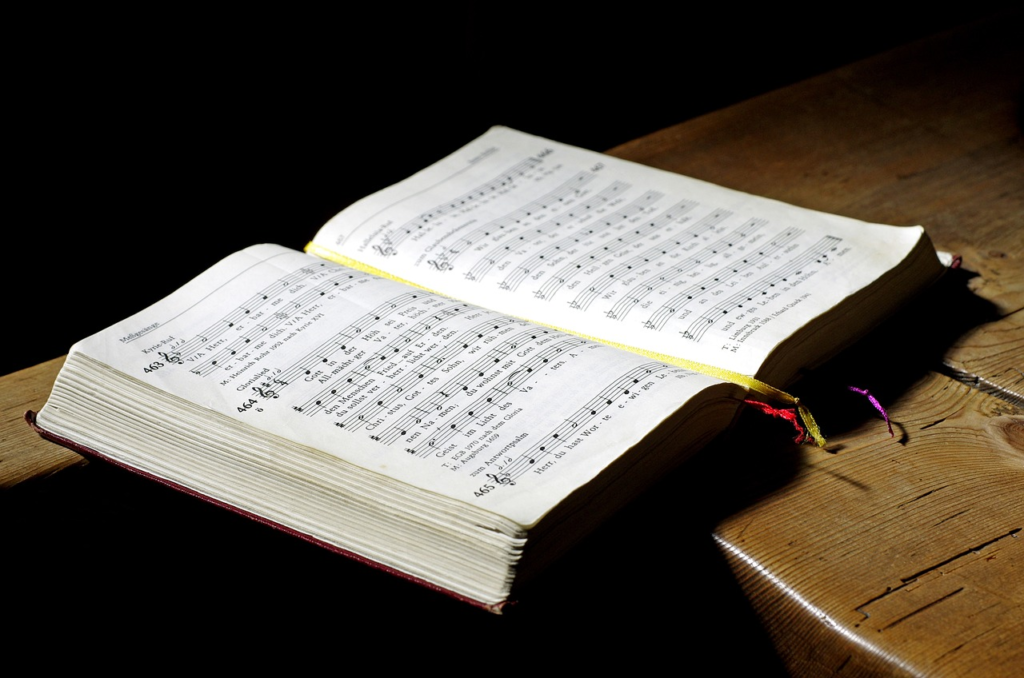Hymns Unveiled: Insights and Stories from Church Musicians

Sometimes the most powerful things in life are also the simplest. Hymns occupy a special place among melodies because this timeless music creates one of the strongest connections between song and faith. Church musicians can turn a regular melody into an immersive experience that connects the earthly with the divine. They act as guardians of sacred tunes that have transcended time and space while remaining at the cornerstone of religious rituals. Their powerful lyrics tell inspiring stories that help people step into the realm of spirituality.
The Importance of Hymns in Worship
It would be a mistake to reduce hymns to the status of simple songs because they are much more than that. Under the gifted hands of church musicians, they take new valances and become vessels of devotion and emotion. These simple but inspiring messages invite theological reflection and enable worshipers to better express their hopes and struggles while strengthening their fate. Under these circumstances, it is wiser to view hymns as conduits between the musician, congregants and divinity.
The beauty of hymns is that even though they changed little over the years, they constantly evolve and are as relevant today as the day they were written. Church musicians use them with electrifying effect, as the songs send shock waves of energy throughout the room. The congregation is brought together and embarks on a spiritual journey like a single person. Few melodies can produce this effect, which feels like a collective deep breath before a spiritual plunge.
The divine is sometimes simple, and hymns are mirrors of emotions that serve as a shining example of this belief. Their simple and few lyrics are easy to learn, so when church musicians start singing them, the words are instantly on the minds and lips of everyone. When the selection of melody resonates with the theme of the worship service, the effect is multiplied. The most talented musicians decide in advance what spiritual journey the worshipers should embark on. This way, the power of hymns becomes self-evident and it is felt by every member of the congregation. Some of the most famous hymns are:
- Amazing Grace
- How Great Thou Art
- It Is Well with My Soul
- Great Is Thy Faithfulness
- Be Thou My Vision
Discover the Stories Behind Hymns
One of the frequent complaints issued by music lovers is that modern songs lack consistency and a compelling story. This doesn’t apply to hymns, as behind every one of them lies a personal experience or a moment of inspiration. Church musicians have the merit of bringing these stories to life and helping people connect with the hymn’s deeper meaning through music. A little storytelling goes a long way, and people tend to get more immersed when told the story behind the song.
Hymns tap into an ocean of emotion, ranging from inspiring and soothing to grief and sadness. They also help worshipers understand how the protagonists of the stories they depict found peace, usually through faith. The beauty of such stories is that they transcend time and generations, so even the oldest hymns appeal to modern people. Church musicians have the merit of using them to create a strong connection between the present, past and future.
When the congregation joins voices to sing the hymn, they are brought together by the music while tapping into its history of worship. The feeling of sharing a song that was enjoyed by so many generations is incredible and highlights the continuity of religion. It is also reassuring to know that the hymns will endure and those singing them today will resonate with future generations. Preserving this incredible heritage and keeping it vibrant in the hearts and minds of people is a beauty and a privilege.
Spiritual Connections Across Generations
Unlike other forms of music, hymns never fell from grace and continue to serve the same important purpose today. Church musicians have curated some melodies while preserving the rich historical context to engage contemporary worshipers. Through innovative techniques, they create arrangements that brilliantly mix traditional elements with modern melodies. The resulting experience appeals to worshipers from different backgrounds with various musical preferences.
The music remains actual because modern people can easily resonate with what inspired the original authors. Worshipers feel like they are part of a broader community that includes not only members of the congregation but the generations before. Hymns are a universal language that unites individuals and creates a profound spiritual connection through music. That’s why people instinctively join voices and sing as one, united by their shared belief and faith.
Inspirations Behind Hymn Writing
The art of hymn composition finds its creative spark in many inspiring origins. Delve into the diverse sources that kindle hymn writers’ spiritual and poetic journey.
- Personal Testimonies of Faith
- Scripture and Biblical Reflections
- Nature and Creation’s Beauty
- Overcoming Life’s Challenges
- Experiences of Worship and Community
Rooted in personal faith, biblical wisdom, the wonders of the natural world, life’s triumphant struggles, and the camaraderie of communal worship, these profound inspirations persistently shape hymns that resonate with the profound aspects of human existence.
A Melodic Embroidery of Faith
Hymns have passed the test of time with flying colours and minimal changes, and they are here to stay. They continue to strongly impact worshipers and bring people together in a sublime manifestation of faith. Church musicians find new valances for a classic genre that enriches the religious experience through stories and insights. The beautiful music is just the tip of the iceberg, as the deeper meanings and powerful messages reach the hearts and minds.
Church musicians have a unique gift and use it generously to preserve and enhance this timeless musical genre. Hymns have always been devotional songs addressed to divinity but have become even more than that over centuries. They continue to bring worshipers closer to God and help them channel their prayers in the most beautiful way possible. At the same time, they create stronger bonds between members of the congregation as they join their voices and souls in prayer.
Check out the source of inspiration for hymns and the role of church musicians in the table below:
| Inspiration Behind Hymn Writing | The Role of Church Musicians |
|---|---|
| Personal Testimonies of Faith | Crafting Meaningful Worship Experiences |
| Scripture and Biblical Reflections | Music’s Influence on Congregational Spirituality |
| Nature and Creation’s Beauty | Balancing Tradition and Innovation |
| Overcoming Life’s Challenges | Collaborating with Worship Leaders and Pastors |
| Events of Worship & Community | Nurturing Spiritual Atmosphere Through Music |
Conclusion
Hymns, the enduring fusion of music and faith, leave an indelible mark on generations. These timeless tunes, meticulously cared for by dedicated church musicians, serve as the unbroken bridge that spans time, linking the past, the present, and the future. Beyond their musical charm, hymns dive deeper, touching the essence of those who sing them. They inspire, console, and unify, forging spiritual bonds that transcend time and space constraints.
In a constantly evolving world, hymns serve as a reminder of the enduring strength of tradition and the profound beauty of shared belief. They inspire us to harmonize our voices, bound together by faith, weaving a rich tapestry of devotion. Let the hymns continue to resound within our sanctuaries, for they are more than mere songs; they are the threads that knit our spirits together, connecting us to something greater than ourselves.




